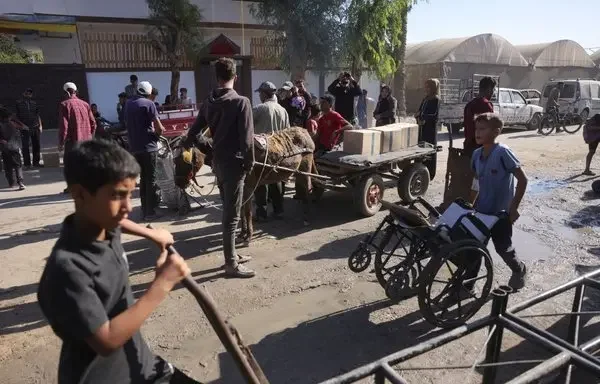Maintaining the ceasefire
The United States and regional partners continue working to preserve the ceasefire in Gaza.
The ceasefire is a foundation for long-term security and reconstruction.
U.S. officials are pressing to ensure that the current cessation of hostilities does not collapse under renewed violence.
The U.S. effort emphasizes that the ceasefire is more than a temporary pause; it must lead to conditions that enable rebuilding of lives and society in Gaza.
This initiative includes diplomatic coordination with nations such as Jordan, Egypt, Turkey, Indonesia and Azerbaijan, who share interest in stabilizing the region and supporting Gaza’s recovery.
Many analysts note the challenge: while the ceasefire holds, creating trust and institutions to support governance remains a major task.
From ceasefire to lasting peace
Regional nations are deeply invested in the peace process because stability in Gaza has broader implications for regional security and prosperity.
A durable peace offers Gaza’s people the chance to rebuild communities and enjoy social and economic opportunity.
The partners stress that without stability, reconstruction cannot succeed because violence and instability will undermine any economic growth, infrastructure development or social recovery.
Building a long-term peace will require sustained international engagement, strong institution building, accountability and coordination of humanitarian and reconstruction efforts.
The U.S. role in this is central, both in diplomacy and supporting frameworks for monitoring and implementation.
Challenges to the effort
Despite the optimism, serious obstacles persist.
There remain adversaries who undermine progress by hoarding supplies, engaging in extrajudicial killings and violating humanitarian norms, actions that weaken prospects for peace and harm Gaza’s civilians.
The ambition of turning ceasefire into full peace is also threatened by gaps between announced commitments and the reality on the ground, including reluctance of some parties to fully demilitarize or accept outside monitoring.
To succeed, the international coalition must hold adversaries accountable and ensure resilience in the mechanisms for reconstruction, governance and security.
Only then can the people of Gaza enjoy the stability, security and opportunity they deserve.
Looking ahead
For Gaza, the path ahead will not be easy.
But the combined efforts of the U.S. and its regional partners offer a concrete chance to shift from conflict to rebuilding and opportunity.
A lasting peace would mean more than the absence of war.
It would deliver the stability, security and dignity that Gaza’s people have long sought.
The success of this endeavor will rest on maintaining the ceasefire, building robust institutions, ensuring humanitarian access and aligning international and regional commitments with local realities.







We must work with all partners to end the war in the Gaza Strip through serious and coordinated efforts, and to ensure the delivery of humanitarian aid to the Palestinian people. All partners must also act more swiftly to bring this war to an end and work diligently to guarantee that all assistance reaches the Strip.
ReplyHope peace will prevail!
ReplyWe pray to Allah that peace, security and safety will prevail in Palestine.
ReplyAllah bless you for this good article!
ReplyExcellent!
ReplyYes, it’s a very useful topic that serves both the nation and the citizens. We thank everyone who contributed to and helped spread it.
ReplyO, Allah, protect Gaza!
ReplyThanks for this great news!
ReplyPeace is the road to prosperity.
ReplyAll due respects
ReplyWhen a new stronghold is established in Gaza — one that upholds human life — each person will have to decide whether to move toward the path of peace or remain trapped in the hell of wars.
Reply